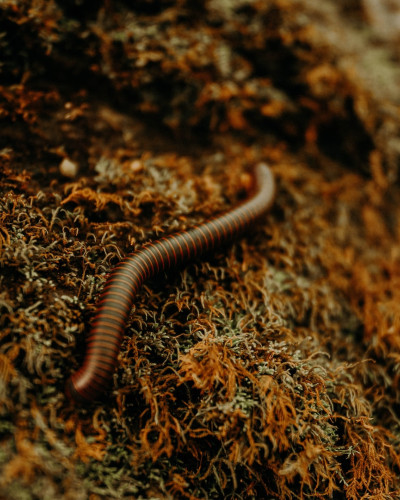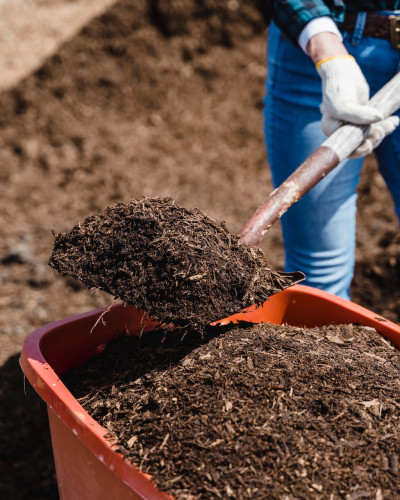How to Make a Wormery: The Ultimate Guide to Recycling Kitchen Scraps and Creating Nutrient-Rich Fertilizer
Worm composting, or vermicomposting, is an eco-friendly and efficient way to recycle kitchen scraps and create nutrient-rich fertilizer for your garden. Wormeries, also known as worm composters, are perfect for small spaces as they are compact, odor-free, and make compost faster than conventional composters.
Worm composting, or vermicomposting, is an eco-friendly and efficient way to recycle kitchen scraps and create nutrient-rich fertilizer for your garden. Wormeries, also known as worm composters, are perfect for small spaces as they are compact, odor-free, and make compost faster than conventional composters. In this ultimate guide, we will walk you through the process of making your own wormery, maintaining it, and using the resulting worm castings and liquid fertilizer to boost the health of your plants.
What You Need to Build a Wormery
Materials:
Plastic or wooden boxes or trays with a lid
Drill and drill bits
Bricks or pieces of wood for support
Newspaper or cardboard
Composting worms, such as European nightcrawlers (Dendrobaena veneta) or tiger worms (Eisenia fetida)
Worm bedding, such as compost or coir fiber (coconut fibers)
How a Wormery Works
A wormery is designed to house composting worms, which are different from the common earthworms you might find in your garden. Composting worms, such as European nightcrawlers and tiger worms, are surface dwellers that specialize in consuming and breaking down decaying organic matter. They thrive in the moist, dark environment provided by a wormery and can efficiently turn kitchen scraps into nutrient-rich compost and liquid fertilizer.
A wormery typically consists of at least two compartments. The bottom compartment is designed to collect the liquid produced by the worms, also known as worm tea or worm wee. This liquid fertilizer can be drained off and diluted with water to provide a nutrient boost for your plants. The upper compartment(s) house the worms and the kitchen scraps that they will consume. This is also where the worm castings, or vermicompost, will be produced.
Holes in the bottom and sides of the trays or boxes allow for proper airflow, which is essential for maintaining a healthy worm habitat. These holes also enable the liquid to drain into the collection tray and allow the worms to migrate between compartments as they consume the organic matter and create compost.
Step-by-Step Guide to Building a Wormery
Preparing the containers: When selecting containers for your wormery, choose plastic or wooden boxes or trays that are at least 14 inches (35 cm) in diameter. Larger surface areas will allow you to add more kitchen scraps and house more worms. UV-treated containers will last longer when placed outdoors. Drill holes in the base and sides of the boxes to ensure proper airflow and drainage. If desired, you can also install a faucet at the bottom of the liquid collection tray to make draining the liquid fertilizer easier.
Assembling the wormery: Place your wormery on bricks or pieces of wood to elevate it and ensure proper airflow through the holes in the bottom. Line the bottom of the wormery with newspaper or cardboard to prevent worms from falling out.
Adding worm bedding material: Add about half a bucket of worm bedding material, such as compost or coir fiber, to the bottom of your wormery. The bedding should be damp, resembling the texture of a wrung-out flannel. This will provide a comfortable environment for your worms to settle into their new home.
Introducing the worms: Place your composting worms, such as European nightcrawlers or tiger worms, into the bedding. Add a layer of kitchen waste, such as vegetable peels, banana skins, tea bags, coffee grounds, and eggshells, on top of the bedding to
provide food for the worms. Avoid adding meat, dairy, citrus, onions, or garlic, as these can create an acidic environment that is harmful to the worms. Wait a week before adding more food to give the worms time to settle into their new home. 5. Maintaining the wormery: Place your wormery in a shady, sheltered spot to protect it from extreme temperatures and direct sunlight. Feed the worms with appropriate kitchen scraps regularly, but avoid adding too much food at once to prevent odors and flies. Remember to also add carbon-rich materials, such as cardboard or newspaper, to maintain proper moisture levels in the wormery.
Swapping trays and collecting compost: When the top tray of your wormery is full, swap it with the empty middle tray and start adding food to the new top tray. The worms will migrate up through the holes in search of food, leaving the lower tray full of compost, free of worms. You can then collect the worm compost and use it as a soil conditioner or as an ingredient in potting mixes.
Using Worm Compost and Liquid Fertilizer
Worm compost, or vermicompost, is a valuable resource for your garden. It can be used as a soil conditioner, helping to improve soil structure and fertility, or as an ingredient in potting mixes to provide a nutrient boost. The liquid fertilizer, or worm tea, that collects in the bottom tray of your wormery should be drained regularly and diluted with water before use. A ratio of one part worm tea to ten parts water is recommended for optimal plant nutrition.
Tips for Successful Wormery Maintenance
Monitor the waste and moisture levels in your wormery to ensure optimal composting conditions. If the wormery becomes too wet or smelly, add shredded newspaper or cardboard to balance the moisture levels.
Ensure proper airflow and temperature control by drilling holes in the lid and sides of your wormery, and placing it in a sheltered, shady spot.
Protect your wormery from extreme weather conditions, such as freezing temperatures or excessive rainfall, by wrapping it in insulation or moving it indoors during winter months.
Observe worm reproduction and population growth to ensure a healthy, productive wormery. Worm populations can double every 60-90 days, depending on temperature, and their rapid reproduction can help your wormery process more kitchen waste.
Alternative Wormery Designs and Materials
If you're interested in a more attractive wormery or one that serves multiple purposes, consider constructing one from wood. Wooden wormeries can be designed to double as benches or seating for small spaces, and they offer better insulation and breathability than plastic containers. Multi-compartment wormeries can also make compost collection easier by providing separate spaces for worms, kitchen scraps, and finished compost.
Conclusion
Building and maintaining a wormery is an easy, efficient, and eco-friendly way to recycle kitchen scraps and create nutrient-rich compost and liquid fertilizer for your garden. By following the steps outlined in this guide and incorporating the tips and alternative designs mentioned, you can create a thriving worm habitat that will benefit your plants and contribute to a more sustainable lifestyle. Give it a try and share your experiences with others as you embark on your worm composting journey.

